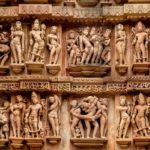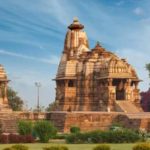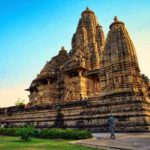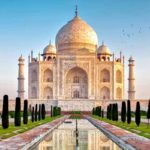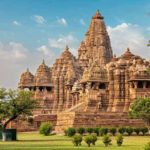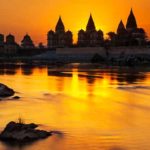The Khajuraho Group of Monuments is a group of Hindu and Jain temples in Madhya Pradesh, India, about 175 kilometres (109 mi) southeast of Jhansi. They are one of the UNESCO World Heritage Sites in India. The temples are famous for their nagara-style architectural symbolism and their erotic sculptures.
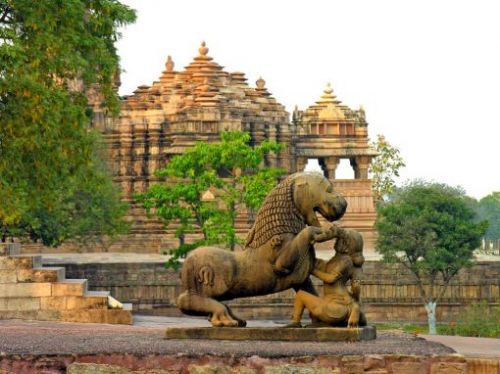
Most Khajuraho temples were built between 950 and 1050 by the Chandela dynasty. Historical records note that the Khajuraho temple site had 85 temples by the 12th century, spread over 20 square kilometers Of these, only about 25 temples have survived, spread over 6 square kilometers. Of the various surviving temples, the Kandariya Mahadeva Temple is decorated with a profusion of sculptures with intricate details, symbolism and expressiveness of ancient Indian art.
The Khajuraho group of temples were built together but were dedicated to two religions, Hinduism and Jainism, suggesting a tradition of acceptance and respect for diverse religious views among Hindus and Jains in the region

The Khajuraho monuments are located in the Indian state of Madhya Pradesh, in Chhatarpur district, about 620 kilometres (385 mi) southeast of New Delhi. The temples are near a small town also known as Khajuraho, with a population of about 20,000 people
Khajuraho is served by Civil Aerodrome Khajuraho with services to Delhi, Agra, Varanasi and Mumbai. The site is also linked by the Indian Railways service, with the railway station located approximately six kilometers from the entrance to the monuments .
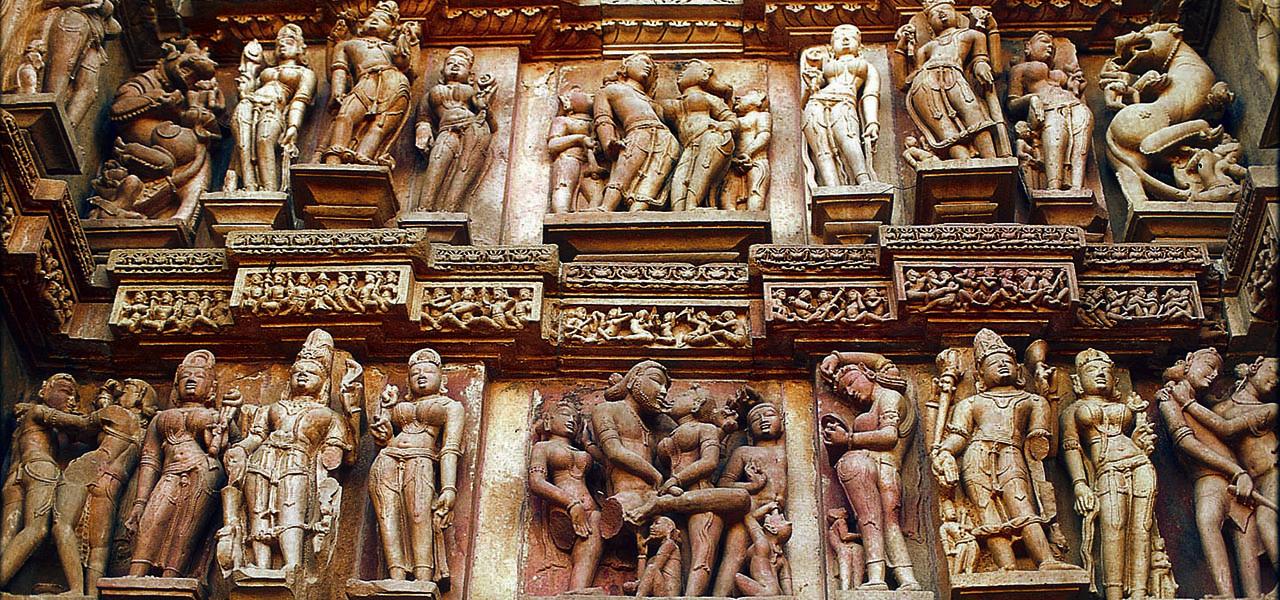
The monuments are about 10 kilometers off the east-west National Highway 75, and about 50 kilometres from the city of Chhatarpur, which is connected to the state capital Bhopal by the SW-NE running National Highway 86.
The Khajuraho group of monuments was built during the rule of the Chandela dynasty. The building activity started almost immediately after the rise of their power, throughout their kingdom to be later known as Bundelkhand Most temples were built during the reigns of the Hindu kings Yashovarman and Dhanga. Yashovarman’s legacy is best exhibited by The Lakshmana Temple. Vishvanatha temple best highlights King Dhanga’s reign.22 The largest and currently most famous surviving temple is Kandariya Mahadeva built in the reign of King Vidyadhara. The temple inscriptions suggest many of the currently surviving temples were complete between 970 and 1030 CE, with further temples completed during the following decades.

The Khajuraho temples were built about 35 miles from the medieval city of Mahoba,the capital of the Chandela dynasty, in the Kalinjar region. In ancient and medieval literature, their kingdom has been referred to as Jijhoti, Jejahoti, Chih-chi-to and Jejakabhukti.
v was mentioned by Abu Rihan-al-Biruni, the Persian historian who accompanied Mahmud of Ghazni in his raid of Kalinjar in 1022 CE; he mentions Khajuraho as the capital of Jajahuti.The raid was unsuccessful, and a peace accord was reached when the Hindu king agreed to pay a ransom to Mahmud of Ghazni to end the attack and leave.

Khajuraho temples were in active use through the end of the 12th century. This changed in the 13th century; after the army of Delhi Sultanate, under the command of the Muslim Sultan Qutb-ud-din Aibak, attacked and seized the Chandela kingdom. About a century later, Ibn Battuta, the Moroccan traveller in his memoirs about his stay in India from 1335 to 1342 CE, mentioned visiting Khajuraho temples, calling them “Kajarra”

